Worn down by three days of non-stop viewings of ceramic tiles at the fantastic Cersaie International Exhibition in Bologna, Italy a few weeks back, I hastily slipped onto a fast train – and made tracks for Rome.
Waiting there for me was a room at the Alberga Santa Chiara. I’d reserved it months ago, at the urging of a very good friend and intrepid confidante, known for his well-traveled, erudite and selective sensibility.
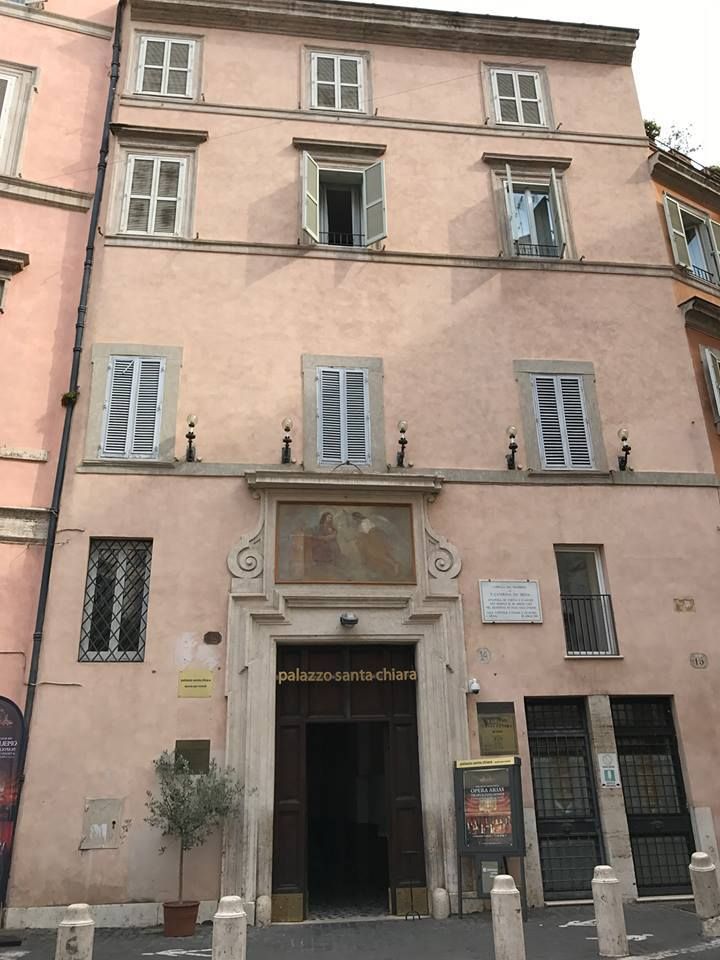
Third floor, center at the Santa Chiara
“It’s behind the Pantheon,” he’d said in subtle understatement.
The room I found there? It was Spartan, and almost monastery-like in its simplicity. There was a single bed, a bath, a desk and a tiny-screened television. But there was also a giant and sweeping vista, once I opened the window and threw back the shutters.

View from the Santa Chiara
A 19th-century facade for a church dedicated to St. Claire of Assisi presented itself at eye level, seven saints staring back at any onlooker. Three stories below, traffic from motorcycles, Smartcars and travelers on foot moved rapidly through a three-pronged intersection. Light poured in from above, the sky tinted aquamarine at sundown.
Next door is a tiny auditorium in an eighth-century structure. Opera’s on tap every evening at 7:30 in the Theatre of Palazzo Santa Chiara. I was lucky enough to hear works by the Italian greats last night, in a live and searing one-hour session from voices and musicians well-versed in Verdi, Puccini and Vivaldi.
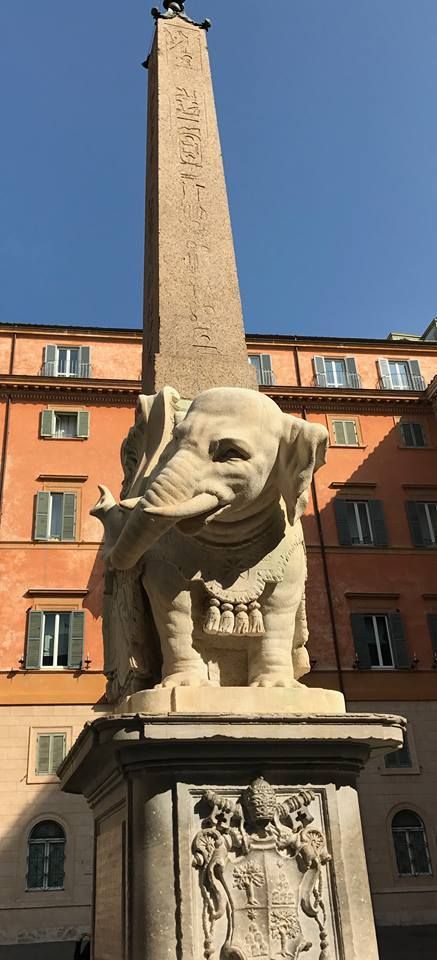
Bernini’s elephant
Around the corner is one of Bernini’s last sculptures: a grinning marble elephant with an Egyptian obelisk balanced on its back. Right down the block from that is the Pantheon, a sacred space like none on the planet. It’s a metaphysical magnet for the thousands who flock to see its marble floors from Egypt, East Asia and Africa – not to mention its monumental cube, cylinder, dome and Corinthian columns.
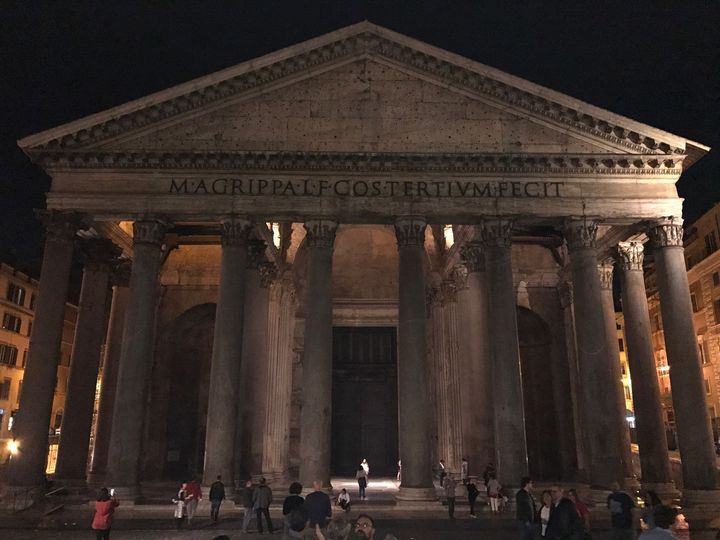
The Pantheon, Rome
Around its Piazza della Rotonda are restaurants dispensing fine foods and wines – cheeses and veals and Barolos and Barones among them. The waiters are happy to serve and eager to please. Ten minutes away on the Piazza Navona, is Bernini’s Fountain of the Four Rivers, its green water a font of continuous delight.
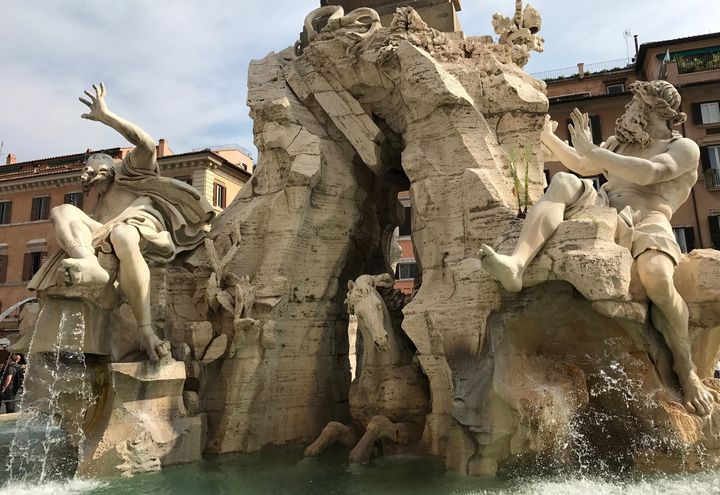
Piazza Novona, Bernini
There is also the 15-minute walk over to the Trevi Fountain, and all the awe it inspires. It’s crowded in the evening, to be sure, but there’s relief at a way-station on the stroll back to the hotel. Stop at the Ristorante Toscano, “Il Buco,” on the di Capriano Nicole as you walk. Ask for Alberto. He’ll serve you the finest veal with mushrooms and sauce you’ll ever eat. And that’s a promise.
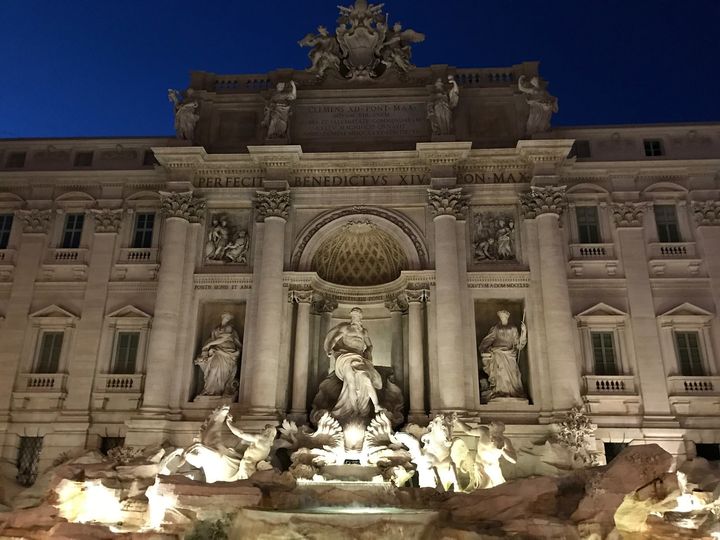
Trevi Fountain, Bernini
So yes: The Santa Chiara is indeed behind the Pantheon. But it’s also on the edge of one of the most interesting and dynamic neighborhoods in all of Italy. And it remains, until today, one of the world’s best-kept secrets.
For more, go here.
J. Michael Welton writes about architecture, art and design for national and international publications, and is architecture critic for The News & Observer in Raleigh, N.C. He edits a digital design magazine at www.architectsandartisans.com,, where portions of this column first appeared, and is the author of “Drawing from Practice: Architects and the Meaning of Freehand“ (Routledge: 2015). He can be reached at mike@architectsandartisans.com. Follow him on Twitter and Instagram at: @mikewelton